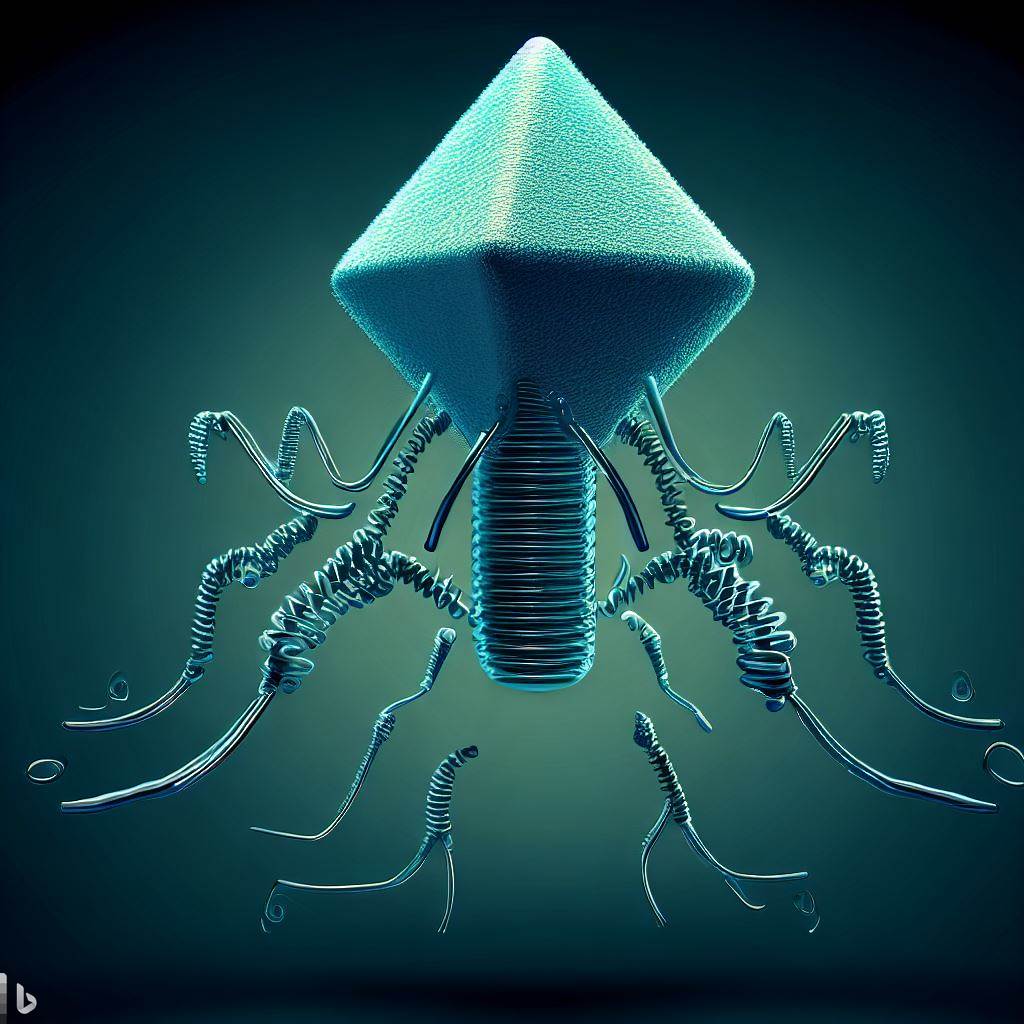 |
|
| DNA and RNA. Credit Gabriela Slizewska |
A bacteriophage, also known as a phage, is a virus that infects and replicates within bacteria and archaea. Like any other viruses, they are made up of nucleic acids encased in a protein coat (capsid). Although morphological appearance is one of the characteristics used to classify phages (Phage morphologies), evolving molecular technologies have enabled other cellular characteristics to be incorporated into microbe classification. One of the molecular-level aspects is the virus's genomic content. Phage genomic composition is extremely diverse, consisting of DNA or RNA, which can be single-stranded (ss) or double-stranded (ds). The genomes of RNA viruses are smaller than those of their counterparts (DNA viruses). Many scientists have largely ignored RNA viruses in their research, preferring to concentrate on DNA viruses. Until now, only two families of these viruses have been identified as having RNA as their genomes. RNA phages are frequently used as prototypes in modern recombinant virus-like particle (VLP) technologies.
DNA phage families
List of bacteriophages with DNA genomes
- T4-Infect E. coli
- Enterobacteria phage T2
- Enterobacteria phage T6
- lambda
- Mu
- M13
RNA phage families
List of bacteriophages with RNA genomes
- MS2-Infect E. coli and some other members of Enterobacteriaceae
- Bacteriophage f2-Infect E. coli
- Bacteriophage Qβ (Q beta)-infects bacteria that have F-pili
- Pseudomonas phage ϕ6
- Enterobacteria phage GA
Sources
- https://www.thoughtco.com/bacteriophage-virus-that-infects-bacteria-373887
- https://www.ncbi.nlm.nih.gov/pmc/articles/PMC6071253/
- https://www.frontiersin.org/articles/10.3389/fmicb.2016.01911/full
- https://www.karger.com/Article/Fulltext/449503
- https://journals.plos.org/plosbiology/article?id=10.1371/journal.pbio.1002409
- https://www.technologynetworks.com/immunology/articles/lytic-vs-lysogenic-understanding-bacteriophage-life-cycles-308094
- https://courses.lumenlearning.com/boundless-microbiology/chapter/viral-diversity/
- https://microbiomejournal.biomedcentral.com/articles/10.1186/s40168-020-00990-y
- https://bio.libretexts.org/Bookshelves/Microbiology/Book%3A_Microbiology_(Boundless)/9%3A_Viruses/9.7%3A_Viral_Diversity/9.7B%3A_RNA_Bacteriophages
- https://academic.oup.com/femsle/article/363/6/fnw027/2570238
- https://en.wikipedia.org/wiki/Bacteriophage
- https://www.britannica.com/science/bacteriophage
- https://talk.ictvonline.org/taxonomy/




Comments